
Yin Zhenkun
Chief Engineer of RoadSmart
Graduated from Xi'an University of Science and Technology, currently the head of RoadSamrt R&D department. Focusing on the R&D of intelligent monitoring and control systems, led RoadSmart to master the ten coretechnologies of solar street lamps. In the fields of circuit, control system circuit design, motor and drive, especially in the field of smart LED, he has rich theoretical knowledge and practical experience.
Mobile: 86 136 9226 2895(AFR)
Email: info@socreat.com
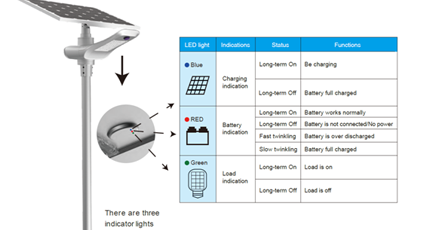
Precautions for daily maintenance, common faults and solutions
1. Controller working status display Battery indicator (Red light) Charging indicator (Blue light) Discharge indicator (Green light) Working status ON OFF OFF Waiting for discharge(5min) ON OFF ON Discharging ON Slow Flash OFF Charging OFF Quick Flash OFF Battery over-discharging ON Quick Flash Flash Battery Over-discharging + Charging ON OFF Slow Flash Load missed ON OFF Quick Flash Load shorted OFF OFF OFF Battery hardware protection controller damaged 2. Attention of installation Please refer to article Installation Guide of Solar Street Light in News parts of this website 3. Matters that need to pay attention to in daily use of the solar light a. Forbidden to throw stones and other objects at the lamp. b. Change the lighting mode of the solar light must strictly follow the procedure. c. Adjust in time when the elevation angle or horizon level of the light is offset. 4. Solar street lights do not light up after sunset. Common faults and troubleshooting are as follows: (1) If the test lamp does not turn on immediately after unpacking, first check the indicator light of the controller; a. Please check whether the solar panel and the lamp head are connected well and tightened. b. When the solar panel and lamp head is well connected, the controller's battery indicator (red light) should always be on. If it does not light up, the battery may be discharged. Put the lamp head and the solar panel under the sunlight together, and observe the controller indicator's working status. If the red light is always on and the blue light flashes slowly, press the demo mode with remote control. If the light is turned on, then the light is functional; If the light still doesn't work, please return the entire lamp to the factory. c. The indicator light is flashing normally, and the remote control demonstration mode does not light up. Please pay attention to whether the three indicators of the controller flash at the same time when pressing the remote control. If it does not flash at the same time, it means that the signal did not send successfully. Adjust the remote control distance and send again. If the sending is still unsuccessful, the remote control may be damaged, or the remote control battery may be out of power. Please try again after replacing the remote control. 5) The street lights have been installed for a while and the lights are not on. Common faults and troubleshooting are as follows: (1) If it has been installed and used for a period of time, first check the indicator light of the controller; a. All the indicators are off. It is possible that the battery is over-discharged and the battery is protected by hardware. You can check the indicator light during the next daytime. If the red light is always on and the blue light is flashing, it means light is charging normally, and the solar street light is functional. If the indicator light does not light up during the daytime then the lamp is damaged. You need to replace the lamp accessories. b. The light is on normally for a period of time, but it is found the lighting time is too short. Please observe the surrounding environment, check whether the solar panel is blocked, whether the angle of the maximum irradiation area of the road surface is adjusted, whether it has been continuously used for several rainy days and the installation angle of the solar panel is adjusted. If none of the above problems exist, please use the universal remote control to read the setting parameters and check whether it is the normal factory mode setting. If the current setting is too high or the control changes the lighting time is short, please return to the factory default mode. If above instructions still can’t solve your problem, please contact Road Smart team directly
View More
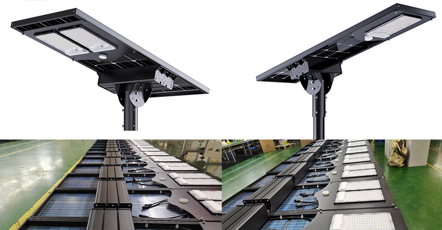
The Role of Spray Street Lamp
The spray street lamp consists of the following parts: water storage tank, filter, high pressure plunger pump, high pressure spray pipeline, atomizing nozzle, electric control box, street lamp pole. The spray street lamps are arranged and designed according to the position of the water intake point, and the number of nozzles is set according to the road traffic and the shape of the street lights. Operators control the power supply facilities through the Internet of Things. The spray facilities will turn on when the air humidity is below 60% RH and above 70% RH and when the wind speed is high to accelerate the pressure drop of particle concentration. In addition to retaining the current opening and closing mode, research and develop the index control link, set the upper and lower limits of the PM value, automatically open and close the purification facilities according to the monitoring data of PM2.5 and PM10. Adjust the spray strategy of street lamps from time to time to form a 24-hour cycle of dust reduction, and gradually realize the transformation from the traditional artificial dust reduction mode represented by mobile fog cannons to intelligent dust reduction.The spray system of the spray street lamp is different from the conventional spray system. The street lamp spray system uses high-pressure fine atomizing nozzles to spray. The water mist is delicate, the diameter of the mist particles is between 1 to 15 microns, the water mist is suspended in the air, and is scattered with the wind by the air flow. Because the water mist is delicate, it quickly evaporates and vaporizes after absorbing heat, and most of the water mist has been vaporized before landing. Therefore, these water mists will not wet the clothes of pedestrians. At the same time, the evaporation of the water mist increases the air humidity, which makes the air resuspended particles agglomerate into clusters and fall. Continuous spraying makes the dust micelle not breaking down again due to air drying. The street light pole spray system equipment adopts an industrial-grade integrated high-pressure plunger pump, that is, a direct-connected pump system, which maintains sufficient concentricity, and has high dynamic balance and reliability. The flow of water supplied by the pump station system is strictly proportional to the speed of the pump, and the control system can adjust the flow of the supplied water through the speed of the motor or the control valve. Based on this feature, the street lamp pole spray system equipment can adjust the output of water mist at any time according to changes of the environment, and maintain the constant pressure output of the system, so the system is quite reliable and stable. The appearance of the main engine adopts industrialized design, which is elegant and beautiful. The high-pressure pump station adopts industrial ceramic high-pressure plunger pump, and a multi-circuit electrical protection system is set inside, which can monitor the system status of the pump station and realize automatic protection and shutdown alarm for water shortage. The spray street lamp saves water. If there are 10 spray lamp poles, after 1 hour of continuous operation, the spray water consumption is about 2.4 tons, and the power consumption is about 5 degrees, which can spray dust for a 200-meter long road. The spray street lamp uses municipal water as the water source, and then uses the water purification filter to filter impurities larger than 1 micron in diameter. It ensures the cleanliness of the water mist; and the diameter of the micro-mist water mist is all within 30 microns, and it floats from the height of the street lamp with a fast evaporation speed, which has little impact on pedestrians. The micro-fog dust suppression equipment integrates air quality linkage monitoring and automatically opens the operation mode, saving operation and maintenance costs. The spray street lamp has unique advantages, protects and purifies the environment and saves energy, which has a broad development prospect.
View More
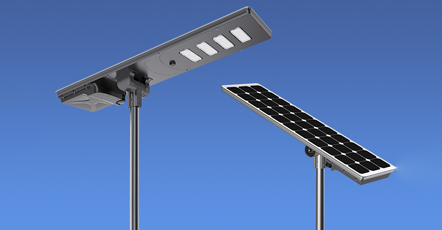
How to maintain the solar street light?
With the features of high brightness, easy installation, stable and reliable operation and long service life, solar street lights have been installed to many places, such as urban and rural roads, tourist attractions and parking lots. Solar street lights do not demand much manual intervention once they are installed. Even though solar street lights usually are low maintenance products compared to conventional lights, proper maintenance can help extend their lifespan and efficiency. In this article, we will talk about the basics about solar street light maintenance. Clean the solar panelsThis step is important to solar street light maintenance and will directly influence how well your outdoor lights function. A lot of debris and dust that accumulate on the outer screen of the solar panels will hinder their ability to absorb sunlight. Generally, daily cleaning is no need because rainwater washes away the dust attached to solar panels on rainy days. It is recommended to clean the panels at least every six months. Regular cleaning will make sure the solar panels function normally. Cleaning the solar panes is quite easy and does not take much time. It is best to clean your solar panels early or late in the day to avoid cleaning them when the fixtures are hot. The first step is to use a hose to get the panels wet. This will wash off all the loose dust particles and debris, after that use soapy water with a soft bristle brush and scrub off the rigid layer of dust from the panels. After this, wash off all the soap water and make sure no residues of soap are left on the solar panels. If properly maintained, solar panels can have a lifespan of around 25 to 30 years. Regularly trim the surrounding treesAny plant, tree or shrub that may block the sun for part of the day needs to be regularly trimmed to make sure your solar panels have full sun exposure. That’s because your solar street lights rely on sunlight. Removing shade-creating objects is a crucial step in taking good care of solar street lights. You’d better keep a keen eye on the shrubs and tree branches that grow around your solar street light. According to their growth rate, you may need to prune them once per month. Maintain or replace the batteryIf your batteries do not seem to be charging fully or your solar outdoor lights are not functioning properly, it may be due to corrosion on your batteries. Corrosion on the battery or its connections can cause a significant decrease in the electric output of the solar street light. To inspect the battery, carefully dismantle it from the fixture and then check for any dust or light corrosion near the connections and other metallic parts. Light corrosion can often be removed with a soft bristle brush. More stubborn corrosion may require fine-grit sandpaper for removal. If the batteries are too corroded to be easily cleaned, it is time to replace them. Clean the light globesIf you have been noticing dim light in the the globes of your solar street light, the solar panel and battery may not be the reason. Instead, it is the globes that needs to be cleaned. As they are exposed to the outdoor environment most of the time, dust and debris do cover the outer covering of the globe. Therefore, better take them off the lamp post and thoroughly clean them with soap water. Do not forget to dry the water at the end to give them some more luster. Check the connections and wiresYou should check for any possible damaged wires and broken connections every 3 to 6 months. Following this step will significantly increase the lifespan of your solar street light. Do a detailed analysis of the wires and if you spot any irregularity or problem in the wires, change them before a little problem shuts down the whole system. Solar street lights are quite simple to install and use, but just like all other electric appliances, they also need regular maintenance and to be treated with care. Maintaining the solar street light properly will add to their lifespan and give you your money’s worth.
View More
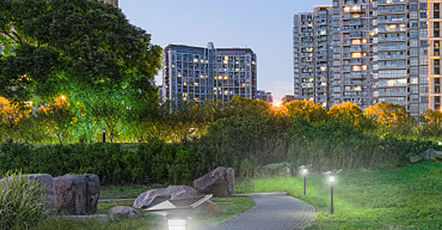
The Reason Why Solar LED Light Gets Dim
Solar LED light has been widely used in many areas. However, some users found that their solar LED lights became dim after a period of time. Why do they become dim? Here are the reasons. Although the solar LED light is modified, the problem of light attenuation still exists in the operational process of solar LED light. There are three main reasons. First, the LED light chip is of poor quality, so that the light attenuation will be faster. Second, the LED light chip performs poorly in the heat dissipation, which results in the overtemperature and faster light attenuation of solar LED light. Third, LED light is drived by constant current. Some of the LED lights are drived by voltage, which will speed up the light attenuation. In the operational process of fluorescent lamp, the ultraviolet ray will reduce the saturation of degraded fluorescent powder. There will be a black thin film on the surface of fluorescent powder after the solar LED light discharges for a long time. Besides, there will be a lot of mercury ion or mercury atoms on the surface of the glass tube. Those mercury ion will exchange with other ion in the glass tube. After a long time, the glass tube will be black and then results in the light attenuation of fluorescent lamp and affects the luminous efficiency. The luminous efficiency refers to the ratio of luminous flux to electric power, whose unit of measurement is lm/W. It shows the energy-saving feature of light source, which is also an important indicator of modern light source performance. LED light intensity indicates the intensity of lighting in any direction. There are other reasons for the light attenuation of LED light, such as that driving current is higher than the rated current value. But the main reason is still the heat dissipation of LED light. The service life of LED light will be longer if the working temperature is lower and the light attenuation is lower. It is inevitable to meet light attenuation in the light operational process. We are supposed to choose the lights which are of good quality and perform well in heat dissipation. When we use the lights, we should try to release the workload so that the light attenuation can slow down and the service life can be extended.
View More
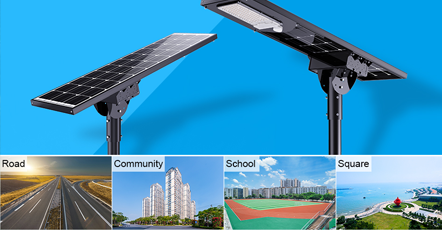
Solar Lights for Schools and Campuses
Solar energy has become extremely important these days considering the condition of the environment. It will play a critical role moving forward as renewable energy sources gradually replace carbon-producing alternatives. Many people are increasing their reliance on the solar energy and solar applications to get the best results. The solar lighting system has become way too important these days to prevent the environment from deteriorating. Adding solar lighting on campus is a smart move—it is a cost-effective way to increase the sense of safety for students, faculty, staff, and guests using the facilities. No need to disturb existing infrastructure or historical landmarks by trenching for power: solar-powered lighting is a self-contained lighting solution with no underground connecting wiring required. Schools, universities, and corporate campuses are supposed to consider leading the way by exploring the various advantages of solar lighting. Some of the benefits of solar lighting are as follows: Safety and Security Solar lights for schools and corporate campuses are self-sustaining, meaning they can be relied upon during outages. Solar independence from the grid ensures consistent power is delivered to school signs along busy intersections and crosswalks. In areas like schools where safety is paramount, solar lighting can help keep drivers and pedestrians aware of their surroundings. Reduced Costs As energy prices continue to rise, schools and universities can save money with the help of solar lighting. Once installed, solar school lights will reduce energy costs throughout their lifespan. Solar lighting requires little maintenance and panels are relatively easy to replace as well. Better for the Environment Unlike electrical systems reliant on the grid, solar lighting does not impact the local ecosystem with destructive trenching or digging during installation. What’s more, solar lights will help minimize the carbon footprint of a school or corporate campus well into the future. Switching to solar lights can make a huge difference in protecting the environment. Where to Use Solar Lighting There are a number of ways a school campus can use solar lighting systems, from parking lots and pathways to smaller systems such as signs. School campus pathways Pathways around a school campus need good illumination for staff and students when moving around at night. The additional safety provided by lighting is very important. Pathways require low-level lighting and the same lights used for other areas like parking lots and roadways can be used along a pathway to keep the designs and aesthetic the same. School campus parking lots School campus parking lots are a great place to utilize off-grid solar lighting solutions. Parking lots are known as a place that requires decent illumination for safety and security reasons. People coming and going from the area benefit from having good visibility provided by LED lights. School campus signs Signs are also a suitable way a school campus can utilize a solar sign lighting solution. Since signs can be located in remote areas, the availability of solar in place of grid power can be a great cost-saving. Signs utilize one or more LED flood fixtures for most applications, or use small LED modules for internal sign applications. The floods or LED modules don't use a lot of power and can be efficiently operated by a solar power system. Since solar sign lighting systems adapt quite easily, every system can be designed to meet the need of a specific sign. Road Smart offer many light options including solar street lights and solar garden lights. We offer high-quality solar light products and excellent after-sales service. We keep most products in stock, and can ship within a few business days. If you need solar lights for the school and campuses, please contact us. Related Articles:How to choose suitable light source for solar street light?Smart Solar LED Street Light Design SchemeMisunderstanding of solar LED street light power Tags: all in one solar street light outdoor smart lighting solar garden light
View More
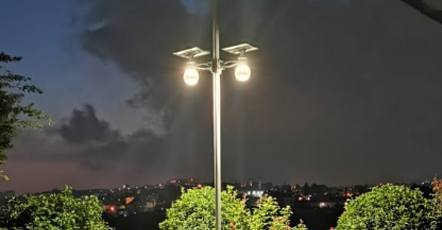
LED Street Light Color Temperature Adjustment Method
Different color temperature of LED street light will give people different feelings in different light conditions. In the environment with low light condition, light of low color temperature will make people feel pleased and comfortable. However, light of high color temperature can make people feel gloomy, dim and cold. In the environment with strong light condition, light of low color temperature makes people feel stuffy; while light of high color temperature makes people feel comfortable and happy. PWM dimming drive power solution is put into use in the new method of LED color temperature adjustment. The color temperature circuit is added to the back-end circuit. The color temperature adjustment circuit adopts PWM switch dimming method to adjust the ratio of the conduction time of the cool white LED array and the warm white LED array to realize the color temperature adjustment. When the color temperature value is around 5000K, LED street light emits white light. When the color temperature is around 3000K, LED street light emits yellow light or warm white light, which is more suitable for roadway lighting than the white light with 5000K color temperature. That’s because the light of 5000K color temperature will make people feel very cold and dazzling visually, which will lead to excessive visual fatigue. Under this color temperature condition, people’s observation ability will also decline. The color temperature is unit of measurement of the light color of the light source. When the radiation of absolute black body is exactly the same as the radiation of the light source in the visible region, the temperature of the black body at this time is the color temperature of the light source. The color temperature of light emitted by different light sources is different. In the energy distribution of low color temperature light source, there is much red radiation. The emitted light is called “warm light”. In the energy distribution of high color temperature, there is much blue radiation. And the emitted light is called “cold light”. The color temperature value of medium color temperature is between 3000K to 6000K. People have no obvious visual psychological effect under the light of medium color temperature, so it is called “neutral” color temperature. The high color temperature value is more than 6000K. The light color is bluish, giving people a cool feeling. When the object is illuminated by a high color temperature light source, it will make people feel cold.
View More
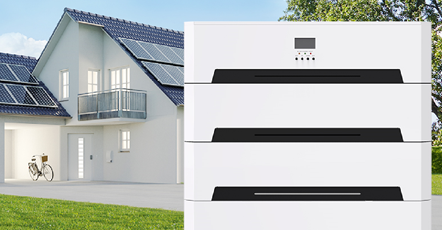
What should you know about solar battery parameters?
Solar battery technology is the core of the solar power revolution that is still all the rage today. As battery technology develops, and the demand for renewable energy solutions such as solar increases, the accessibility to solar batteries is only rising. Since the battery is such a critical part of the energy system, it must be chosen carefully. As such, whether you’re already operating with a solar panel system or you’re considering investing in solar, it is essential to be well-aware of your battery storage options. In this article, we will talk about some important parameters to keep in mind while choosing the right batteries for your system. Storage CapacityIt determines for number of hours for which the battery can be discharged at a constant current to a defined cutoff voltage. The value of this capacity depends on the ambient temperature, the age of the battery, and the discharge rate. The higher the discharge rate, the lower the capacity, although it affects each battery technology differently. Additional to the Ampere-hour unit, the storage capacity can also be defined in Watt-hours (Wh=V x Ah), where 1 Wh represents 3600 J. Cycle lifeThe number of charge/discharge cycles a battery has before it is considered to have reached its ‘end of life’. Some battery manufacturers give cycle life as full cycles, while others may count even a partial cycle as one full cycle. Lithium batteries will typically have a cycle life of 4,000-10,000 cycles, while a lead battery might be as low as 1,000 cycles. For lead batteries, cycle life can be extended by designing the system to have a lower depth of discharge. Depth of DischargeIn many types of batteries, the full energy stored in the battery cannot be withdrawn (in other words, the battery cannot be fully discharged) without causing serious, and often irreparable damage to the battery. The Depth of Discharge (DOD) of a battery determines the fraction of power that can be withdrawn from the battery. For example, if the DOD of a battery is given by the manufacturer as 25%, then only 25% of the battery capacity can be used by the load. Nearly all batteries, particularly for renewable energy applications, are rated in terms of their capacity. However, the actual energy that can be extracted from the battery is often (particularly for lead acid batteries) significantly less than the rated capacity. This occurs since, particularly for lead acid batteries, extracting the full battery capacity from the battery dramatically reduced battery lifetime. The depth of discharge (DOD) is the fraction of battery capacity that can be used from the battery and will be specified by the manufacturer. For example, a battery 500 Ah with a DOD of 20% can only provide 500Ah x .2 = 100 Ah. Maximum PowerThe maximum amount of power that a battery can generate at a given time, for a short period (usually 3-30 seconds), in kilowatts (kW). An example of when maximum power might be required is when you switch on a blender or vacuum cleaner, both of which cause a sudden surge before leveling off. Maximum output power may be limited by the capacity of the system’s inverter. Round-Trip EfficiencyDue to internal losses and material degradation, not all the energy supplied to the battery during charging can be recovered during discharge. The amount of energy that can be taken from the battery during the discharging process over the energy supplied determines the round-trip efficiency. This efficiency is sensitive to the charging and discharging currents. At higher currents, thermal losses increase and therefore the efficiency is reduced. The above is the introduction for some important solar battery parameters. Knowing more about these parameters helps you choose the suitable storage battery for your solar energy system.
View More
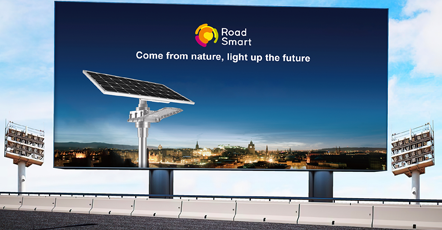
Thailand’s solar power market prospects
Thailand is close to the equator and belongs to the tropical monsoon climate. It has a natural resource base, long sunshine hours and sufficient sunlight. It is a country rich in solar energy resources. According to relevant statistical data, the average daily sunshine amount reaches 5-6.5kWH per square meter, especially In the northeastern and central regions, the highest regional average is about 1100~1400kWH/m2, and the sunshine hours exceed 1800 hours/year, especially in the northeastern and central regions, which exceed 1850 hours/year. This shows the conditions of Thailand. It is very conducive to the development of solar photovoltaic industry. Thailand's power generation mainly relies on natural gas. In fact, Thailand has been plagued by power shortages recent years. There are two main problems: one is insufficient power supply, and the other is heavy reliance on fossil energy. From the perspective of power supply, Thailand’s own power generation capacity can basically meet domestic demand. However, with economic development, the contradiction between power supply and demand is becoming increasingly prominent. From the perspective of power production structure, natural gas accounts for the largest proportion of Thailand's power generation structure. However, as resources gradually become depleted and import prices increase, the use of other resources must be considered. Therefore, the relevant Thai government launched and promoted solar projects to use photovoltaic power generation to solve the power supply problem. Electricity and lighting are indispensable in our lives. Using solar power and lighting can save a lot of resource consumption and electricity bills. Here RoadSmart recommends solar street lights and solar residential energy storage systems suitable for the Thai market: Solar street light Solar residential energy storage system RoadSmart has more than 150 national and overseas patents and more than 10 software copyrights. It has actively carried out intellectual property assessment and intellectual property risk analysis and early warning work to protect the layout of new products and new technologies in domestic and foreign markets. Combined with the above infos, Thailand takes advantage of solar energy for its own development, the use of solar power generation and lighting has a wider range of applications. It is not only suitable for indoors but also for outdoor use. To build an ecologically friendly home, solar street lights and solar residential energy storage systems are essential, not only It will pollute the air and save you a lot of electricity bills. By storing the electricity converted by solar panels into lithium batteries, RoadSmart has a variety of powers and different street light types to choose from. Solar street lights can be widely installed in urban streets, schools, parking lots, parks, rural roads and other areas. The solar residential energy storage system also has a variety of power options to choose from. According to the actual needs of the family, it can meet the daily electricity consumption of the family and prevent backup power generation during power outages to avoid troubles caused to the family when there is no power. It is a worthwhile investment. Highly profitable project.
View More
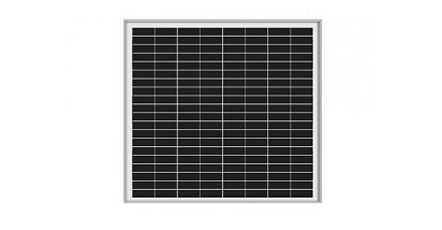
How to design panel angle of solar street light
When it comes to solar street light, the inclination angle usually refers to the angle between the solar panel and the horizontal ground. So what’s the best panel angle to maximize the energy efficiency of solar street lamp. Solar panel angle is the most important issue in the installation of solar lights, solar street lights, LED solar garden lights, solar landscape lights, and so on. A rationally designed inclination angle of solar panel can ensure the sun's radiant energy to the maximum extent, and effectively use the solar energy to generate electricity. The inclination angle is generally determined according to the geographical location (latitude, etc.) of the solar street lights' application site, make the front of the solar panel directly facing the sun, then designed the inclination angle with the maximum amount of light received. If conditions permit, the inclination of solar panels should be adjusted accordingly with seasonal changes. In addition, due to the different installation environments of solar street lights, it is necessary to consider the design of shadows and lighting taking. Road Smart solar street lamp adopts high conversion efficiency mono panel and rotating solar panel structure design, which ensures faster solar charge and no worry with bad weather, including cloudy and rainy days.
View More